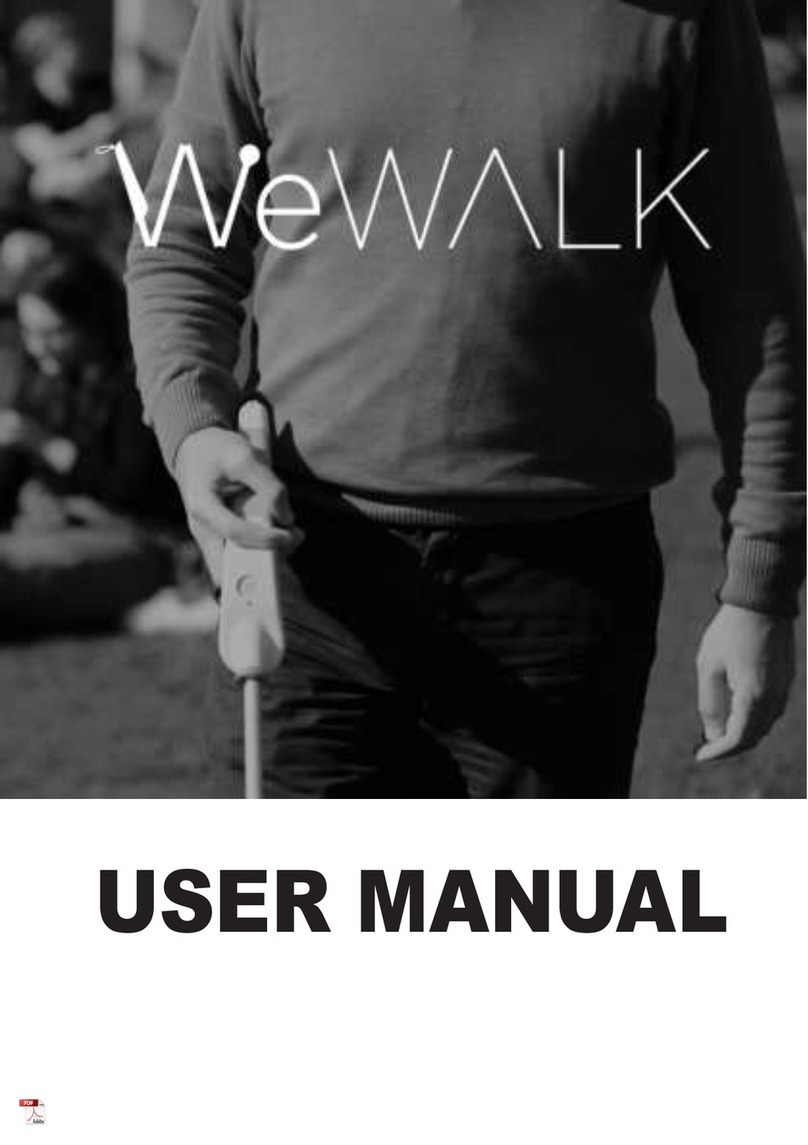© 2021 Malta Society of the Blind 9
The App
I had downloaded the WeWalk app for Android on my Samsung Galaxy A72.
The English version of the app is fine, but it also supports several languages.
However, for German, my native language, the translation is poor. Spanish and
French are poor as well. Main translation problem I found with respect to the
navigation. I would not judge the other languages though.
Pairing the cane with my smartphone via Bluetooth was easy. The only issue I
had upon first time pairing, that the system told me that my smartphone
would not support voice output through the cane. This, however, did not
happen again in subsequent pairing attempts.
Touchpad and Gestures
After pairing, the system prompted me to go through a tutorial how to use the
cane's touchpad and to learn the touchpad gestures used for opening and
closing the app, navigating through the menus, and switching the LED light on
or off.
Some gestures, like sound on/off and LED on/off would require holding the
cane with one hand and perform the gesture with two fingers of the other
hand. This might not always be very practical.
The touchpad did not easily respond to my finger gestures, especially the two-
finger-gestures, even though I was not wearing gloves.
Sound and Sounds
In a noisy environment, especially in a busy street, it is basically impossible to
hear the cane's voice output, even if the volume is set to maximumt. To
understand voice feedback and instructions, one would have to connect
earphones to the smartphone. The same applies when trying to use the voice
assistant to "talk" to your cane.




























